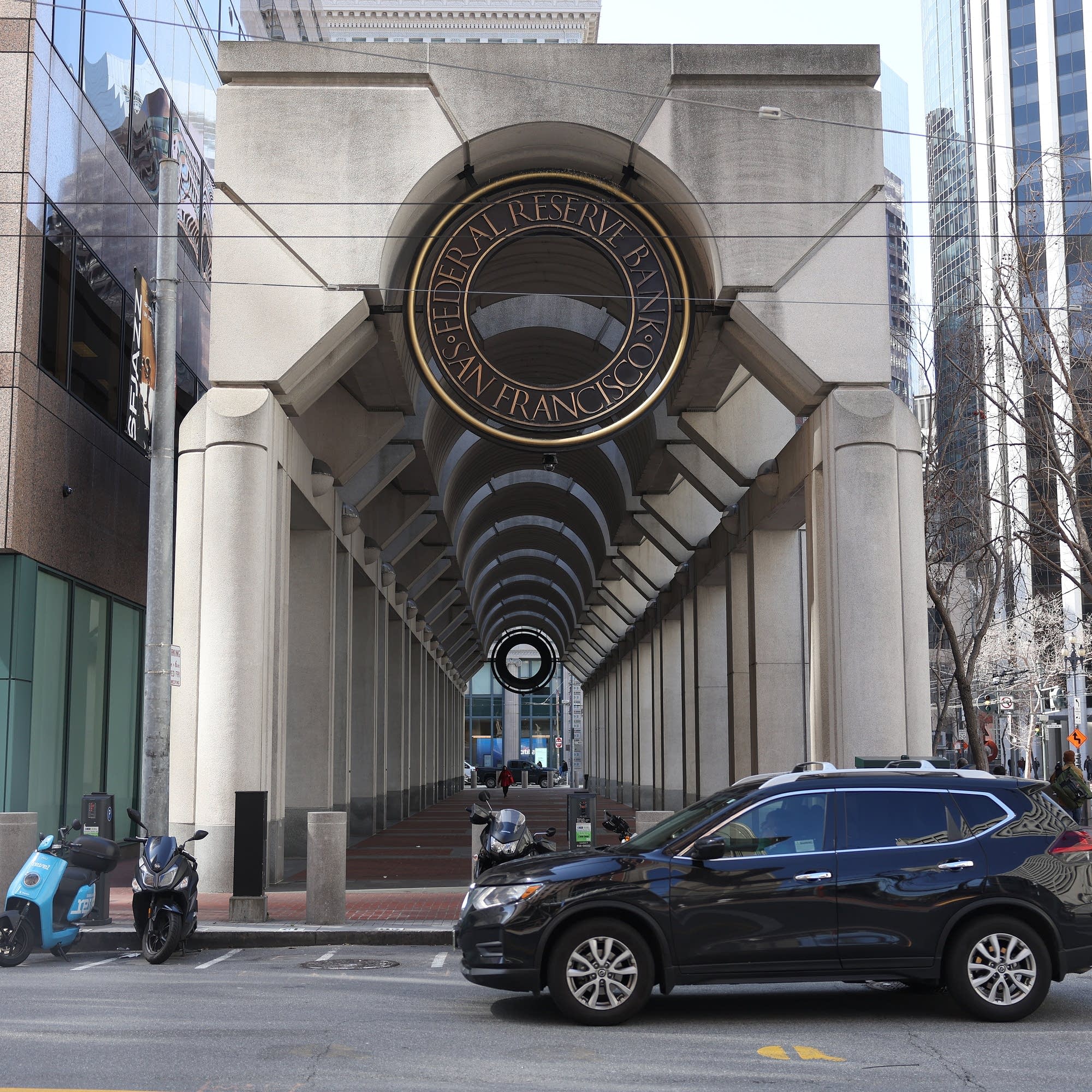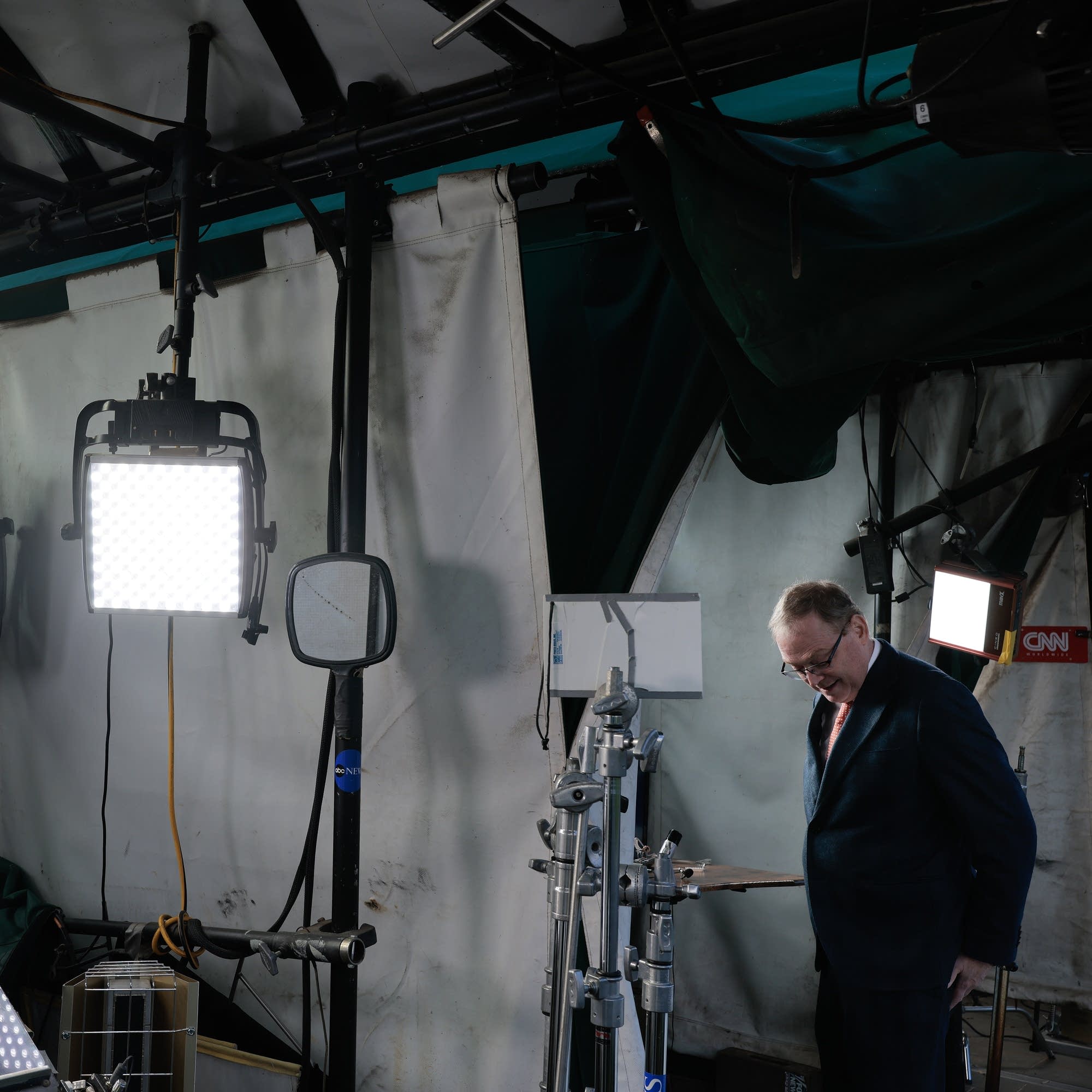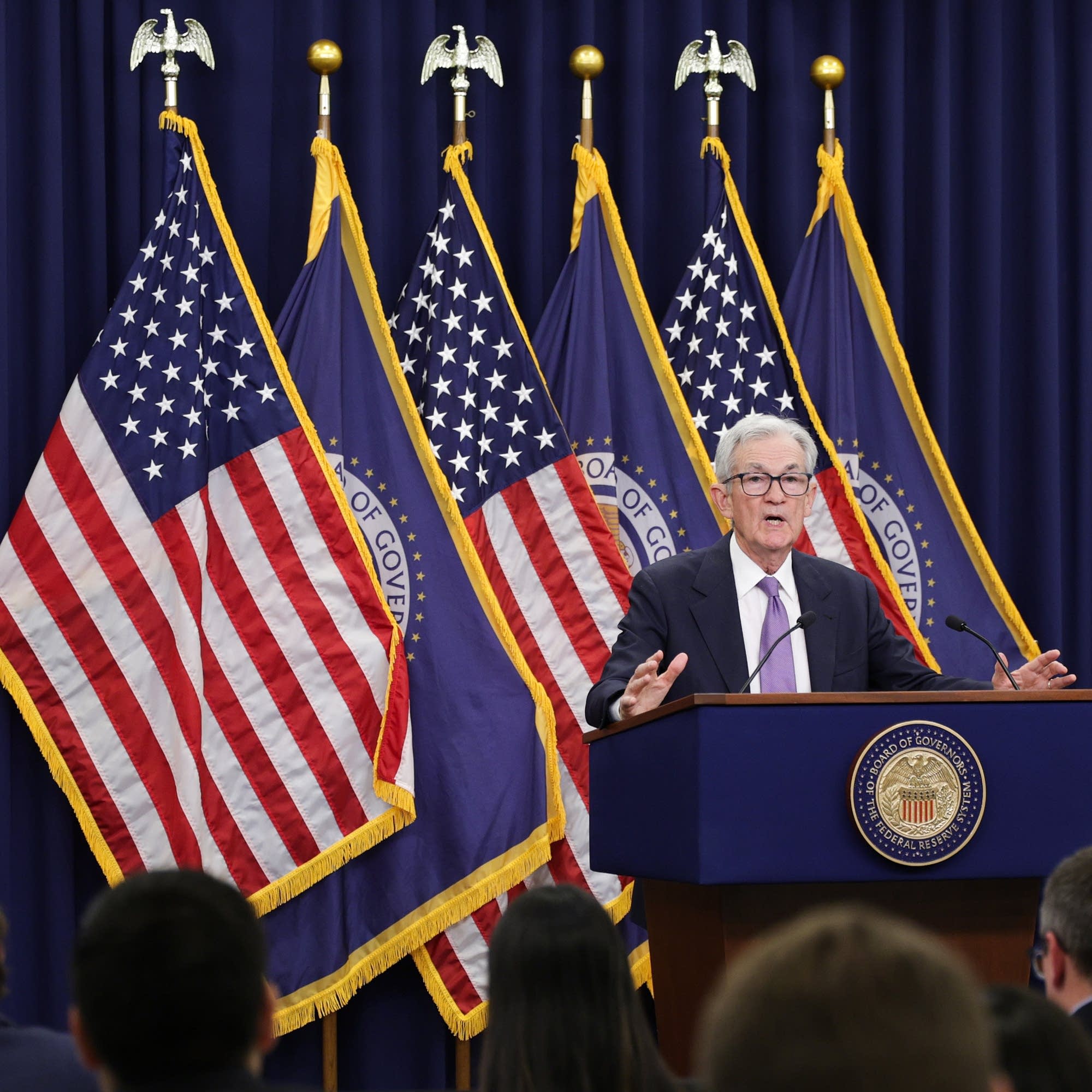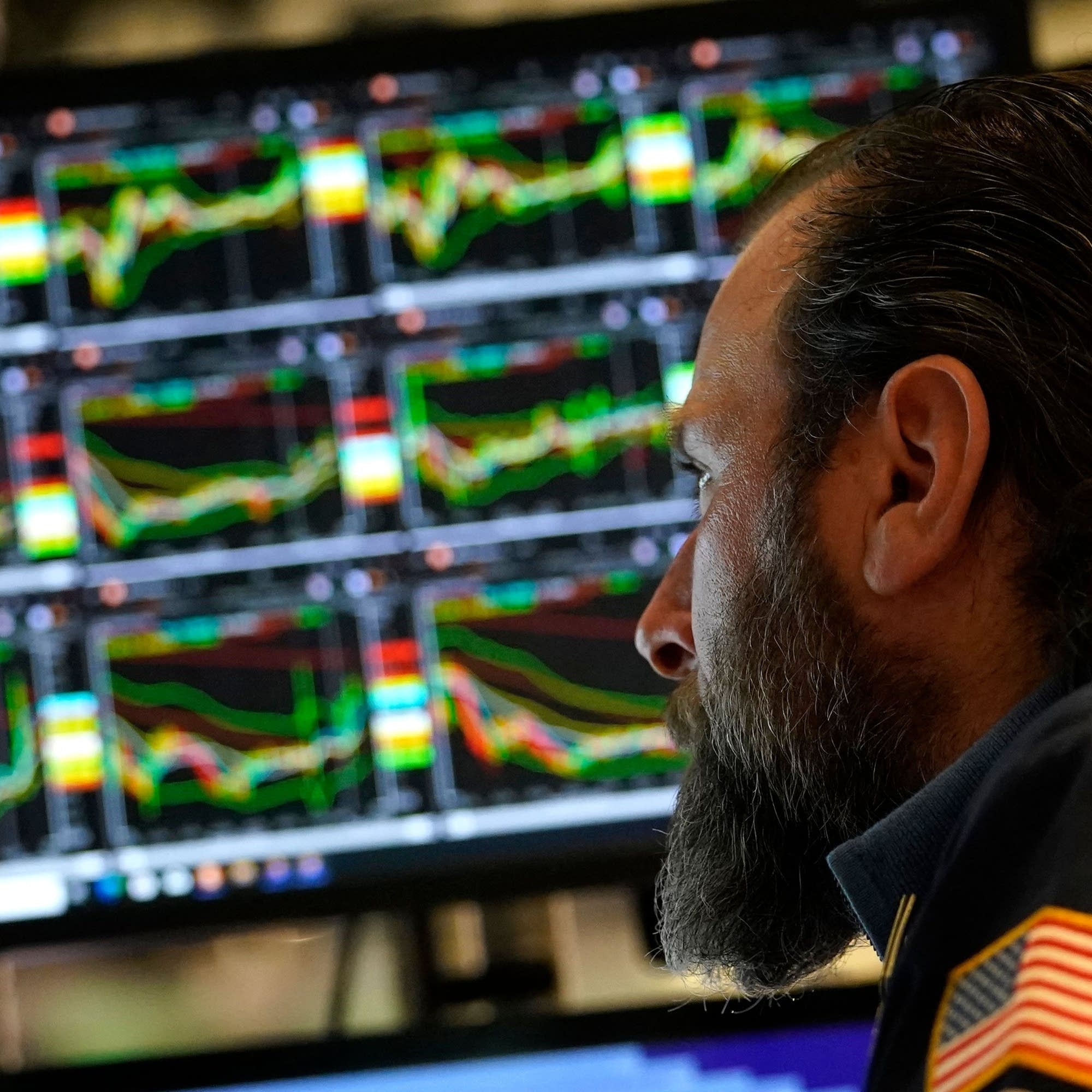What about the regional Feds? What do they do?
The Federal Reserve Board of Governors has gotten a lot of attention lately — President Trump is attempting to remove one member and has nominated another. But there’s more under the central bank umbrella than president-appointed officials. In this episode, we break down why regional Fed banks and Fed presidents matter. Plus: The latest Beige book shows an uptick in lending, shipping costs are down and an economist walks us through her process for reading a CPI report.
Every story has an economic angle. Want some in your inbox? Subscribe to our daily or weekly newsletter.
Marketplace is more than a radio show. Check out our original reporting and financial literacy content at marketplace.org — and consider making an investment in our future.
Press play and read along
Transcript
Speaker 1 This podcast is supported by Odoo. Some say Odoo business management software is like fertilizer for businesses because the simple, efficient software promotes growth.
Speaker 1 Others say Odoo is like a magic beanstalk because it scales with you and is magically affordable.
Speaker 1 And some describe Odoo's programs for manufacturing, accounting, and more as building blocks for creating a custom software suite. So Odoo is fertilizer, magic beanstock building blocks for business.
Speaker 1
Odoo, exactly what businesses need. Sign up at odoo.com.
That's odoo.com.
Speaker 3 I'm no tech genius, but I knew if I wanted my business to crush it, I needed a website now.
Speaker 2 Thankfully, Bluehost made it easy.
Speaker 3
I customized, optimized, and monetized everything exactly how I wanted with AI. In minutes, my site was up.
I couldn't believe it. The search engine tools even helped me get more site visitors.
Speaker 3 Whatever your passion project is, you can set it up with Bluehost. With their 30-day money-back guarantee, what have you got to lose? Head to bluehost.com to start now.
Speaker 2
Well, let's see now. Trade in tariffs, the regional Federal Reserve Banks, and economic data as an economist sees it.
Sounds like a show to me, huh? From American Public Media. This is Marketplace.
Speaker 2
In Los Angeles, I'm Kai Rizzo. It is Thursday, today for September.
Good as always to have you along, everybody. From the Bureau of Economic Analysis today came news of imports into this economy.
Speaker 2 Technically, the report is called International Trade in Goods and Services for the month July 2025.
Speaker 2 They were up, actually, about 6%, which if you think about the timing, does kind of make sense.
Speaker 2 Importers in July trying to load up on inventory before most of the president's tariffs actually hit in August.
Speaker 2 But,
Speaker 2 but
Speaker 2
one data point does not sufficient analysis make, as we all know. And there is other, more recent data that suggests imports have been slowing down.
Among them, Exhibit A, shipping costs.
Speaker 2 Container rates have been falling for 12 weeks straight now. That's according to the Drury World Container Index, supply-demand, of course, being the operative economic model there.
Speaker 2 Marketplace Justin Ho gets us going and explains what it all means.
Speaker 4 One reason shipping costs are down is because there are just a lot of ships out there floating around.
Speaker 4 Simon Heaney with Drury Shipping Consultants says a couple years ago when attacks in the Red Sea clogged up shipping routes, shipping companies ordered new vessels to add more capacity.
Speaker 5 We're getting a very steady flow of new ships at a time when demand growth is slower.
Speaker 4 Heaney says demand for shipping is slowing because importers aren't bringing in as many products from overseas.
Speaker 5 Because of the tariff story, a lot of cargo was brought forward to beat the deadlines. Once those warehouses are full, your ordering slows up.
Speaker 4 And that sluggish demand has been showing up in other parts of supply chains.
Speaker 6 We're seeing, because of the slowdown in imports in August, a real softening of the sort of upstream freight market.
Speaker 4 That's Zach Rogers, a professor of supply chain management at Colorado State University. He says prices have been falling for many of the transportation services that are connected to ports.
Speaker 5 So this is long haul, over-the-road trucks.
Speaker 6 It's also rail.
Speaker 4 And Roger says that's a sign that imports are going to stay weak through at least the end of the year.
Speaker 6 Because essentially what it looks like is that most of the stuff that retailers are going to need for the holiday season is already in the United States.
Speaker 4 But the slowdown in shipping costs isn't only a sign that importers have already purchased the goods they need.
Speaker 7 That could be reflective of the fact that they're anticipating that their buyers are going to have a lot less demand going into the rest of the year.
Speaker 4 That's Megan Schoenberger, senior economist with KPMG. She says consumers have already been pulling back this year.
Speaker 7 We've seen that sort of in the GDP that in the first half, there was a pretty large slowdown from the second half of last year.
Speaker 4 And Schoenberger says there are plenty of signs that consumer spending will keep slowing down this quarter and maybe into the next.
Speaker 7 It's not as if the consumers are flashing red, but there are some metrics that are flashing yellow. Consumers are pushing back against price hikes.
Speaker 7 There are particular signs of stress in low-income households, and that's starting to creep up into the middle-income households as well.
Speaker 4 Schoenberger says that slowdown will continue once the cost of tariffs pushes consumer prices even higher. I'm Justin Ho for Marketplace.
Speaker 2 On Wall Street today, honestly, traders seemed kind of optimistic ahead of tomorrow's all-important August unemployment report. We will have the details when we do the numbers.
Speaker 2 There is a whole lot going on this week, Fed-wise.
Speaker 2 There's President Trump trying to fire Lisa Cook from the Board of Governors and take control of the central bank. We're waiting on next steps from the court on that one.
Speaker 2 Stephen Myron had his confirmation hearing today. He's the White House economist who is Trump's pick to replace Adriana Kugler, the Fed governor who resigned unexpectedly last month.
Speaker 2 But there is more to the central bank than just the seven people who sit on the board of governors.
Speaker 2 Every time the Federal Open Market Committee meets, that's the group that actually sets the interest rate that the Fed controls, five of the 12 people on the FOMC are presidents of the regional Federal Reserve Banks.
Speaker 2 Most of the time, when we talk about Fed presidents, it's because I'm interviewing one of them or because the Beige book, the Eight Times a Year collection of regional economic anecdotes, has just come out like it did yesterday.
Speaker 2 Here's the thing, though.
Speaker 2 With so much of the Fed focus being in Washington, this does kind of seem like an important moment to talk about those other people who get a vote and the ways that they help shape monetary policy.
Speaker 2 And to do that, we've got to go back to the Federal Reserve Act of 1913.
Speaker 8 At the time, remember, lending was very localized and deposit-taking was very localized.
Speaker 2 Halem Anderson is a research economist, used to be with the Bank Policy Institute. And back in 1913, she says Congress wanted a central banking system where interest rates could vary by region.
Speaker 8 It made sense that each region would have own a reserve bank that can accommodate economic conditions of that place.
Speaker 2
Think about it for a second. The economy in, say, New York was really different from the economy of St.
Louis or San Francisco or Dallas.
Speaker 2 So Congress created 12 regional banks in big population centers based on the 1910 census, by the way, if you're wondering how that distribution worked.
Speaker 2 And those banks got to send their own monetary policy until the 1930s.
Speaker 8 During the Great Depression, you know, like there was no centralized policy. Each district was doing its own thing.
Speaker 8 And the policymakers thought maybe we should make it more consistent across different regions.
Speaker 2 Which is how we got the Board of Governors and more centralized central bank power in Washington, as Halem said.
Speaker 2 You fast forward to today, and regional banks do still get a vote on interest rates, yes, but they do a bunch of other stuff too. Jeremy Piger is a professor of economics at the University of Oregon.
Speaker 2 Back in the day, though, He in turn worked for both the Federal Reserve Board in Washington and the St. Louis Fed.
Speaker 9 They were actually quite different positions.
Speaker 2 Economists at the Board of Governors are there mostly to support the chair and the other six governors.
Speaker 10 At the regional banks, though, there's more time given to production of economic research that is meant to be published in scholarly journals.
Speaker 2
And the banks do tend to carve out niches for themselves. The Philly Fed, for example, focuses on publishing consumer finance research.
Cleveland makes daily inflation forecasts. San Francisco?
Speaker 12 It's cash services.
Speaker 2 Kalina Hale is an economics professor at UC Santa Cruz. She worked at the San Francisco Fed for 14 years.
Speaker 2 The research the regional banks put out helped contribute to the Fed's overall understanding of the economy region by region and centralized as well.
Speaker 2 Regional Fed presidents are chosen by independent boards of directors at those regional banks.
Speaker 12 We had the chief marketing officer of Costco,
Speaker 12 CEO of Panda Express, CEO of Alaska Airlines.
Speaker 2 They make their pick. It goes to the Board of Governors in Washington, which then gets to make the final choice.
Speaker 12
Regional Fed presidents don't need to go through congressional approval. They're just approved by the Board of Governors.
So there is this insulation, but it's not impermeable.
Speaker 11 You know, speaking hypothetically here,
Speaker 11 if you were to have a Board of Governors highly compromised in people's assessment of their independence, then the Reserve Bank presidents become even more important in that
Speaker 11 just the the basic math of FOMC decisions, they can provide a counterbalance
Speaker 11 to the Board of Governors.
Speaker 2 That counterbalance, though, that insulation is going to be not hypothetically tested in February when all 12 regional bank presidents are by statute up for reappointment by the Board of Governors, a board that President Trump is trying right now to take control of.
Speaker 2 Layoffs are usually something people kind of whisper about, like he got let go last week, or she just lost her job.
Speaker 2 But layoffs are in the headlines now more than they usually are because the job market, as we've been telling you, is getting kind of meh.
Speaker 2 So, for the latest installment of our series, My Economy, a writer who is trying to end that stigma through her sub stack.
Speaker 13 My name is Melanie Ahrenkrantz. I am the creator of Laid Off, the coolest place on the internet to talk about being laid off.
Speaker 13 I come from journalism, and so I am not a stranger to layoffs.
Speaker 13 I have witnessed a lot of my like endlessly cool, smart, talented friends lose their jobs and I realized there wasn't a lot looking deeper into the experience of the layoff, looking into what was going on in that person's life at the time.
Speaker 13
And I was like, I want to start laid off. I want to talk to people.
It's going to be a newsletter. Let's just see how this goes.
Speaker 13 When all of the news around federal worker cuts were in the headlines, I pretty quickly knew these were people that I wanted to talk to.
Speaker 13 And after I posted just the first interview with a federal worker, a lot more people came out of the woodwork.
Speaker 13 And I think seeing the response to those initial stories really emboldened people to want to share what happened to them.
Speaker 13 Given that my audience is primarily people experiencing job loss, I try to be really mindful about how I'm monetizing the actual content. And that's why all the interviews are always free.
Speaker 13
Brands can sponsor a newsletter and baked into the cost of the sponsorship. 10 readers are treated to coffee on the brand.
They get digital gift cards to a local coffee shop.
Speaker 13 So really just trying to figure out ways that are true to the mission.
Speaker 13 So yeah, making money, it is definitely a side hustle and what I imagine it will be for the foreseeable future, but that is okay because it's a project I'm really passionate about.
Speaker 13 I definitely think there's still a lot of shame around the experience but I think that's changing especially as more and more people are sharing what's happening to them.
Speaker 13 I get a lot of emails still of people who find the newsletter and say, I, you know, I've never told anyone that this happened or like I maybe just told my partner I felt like it was a personal failure, but they're now seeing, I think, through Laid Off, but also through LinkedIn posts and through people being a lot more vocal about what they're going through.
Speaker 13 I think that is a step towards eradicating the shame around the experience and really showing people that it's not a personal failure and has nothing to do with their value as a person or a worker.
Speaker 2
Melanie Aaron Krantz there. She lives here in Southern California.
You know, this series, I know I say this all the time, but it's true. It just does not work without you.
Speaker 2 So, whether you are staying the course or making a pivot, tell us about it marketplace.org/slash myeconomy.
Speaker 12 Coming up. That's not so bad where I keep track of my receipts and look at my monthly inflation figures.
Speaker 2 How an economist does economic data. But first, let's us do the numbers.
Speaker 2
Now, Industrial is up 350 today, about three-quarters of 1%. Finished at 45,621.
That's 45,621. The NASDAQ added 209 points, about 1%, 21,707.
The SP 500 gained 53 points, 8 tenths percent, 65 and 2.
Speaker 2 Goldman Sachs wants a slice of Americans 401k, so it's investing up to a billion dollars in T-Row Price.
Speaker 2 That'll give the latter's clients a chance to put some of their retirement savings into the former's private investment vehicles.
Speaker 2
Now that the Trump administration is making that possible, T-Row Price added 5 and 8 tenths percent. Goldman Sachs backed about 2.5% today.
Bonds up, yield on the 10-year T-note down 4.16%.
Speaker 2 You're listening to Marketplace.
Speaker 2 This Marketplace podcast is sponsored by the University of Illinois Geese College of Business. For many, the next step in their career is an MBA, but finding the time and budget can be a challenge.
Speaker 2 The University of Illinois Geese College of Business offers their online MBA, the IMBA. It's fully online, flexible, and delivered at a fraction of the cost of a traditional MBA.
Speaker 2 Students get the same world-class Illinois faculty and an interactive global network all designed to fit their lives. To learn more about the Geese IMBA, visit onlinemba.illinois.edu.
Speaker 2 that's onlinemba.illinois.edu
Speaker 3 i'm no tech genius but i knew if i wanted my business to crush it i needed a website now thankfully bluehost made it easy i customized optimized and monetized everything exactly how i wanted with ai in minutes my site was up i couldn't believe it the search engine tools even helped me get more site visitors whatever your passion project is you can set it up with bluehost with their 30-day money-back guarantee, what have you got to lose?
Speaker 3 Head to bluehost.com to start now.
Speaker 3
We thought about calling it the wonderful workflow wizard for big businesses battling ballooning budgets. But that felt like it was trying a little hard.
So we just call it the Enterprise Browser.
Speaker 3 It drives productivity up, IT costs down, and helps you stay more secure than ever. It's like a wonderful workflow wizard for big businesses battling ballooning budgets.
Speaker 3 The Enterprise Browser from Island.
Speaker 14 Have you ever loved your HR or payroll software? Didn't think so. Deal changes that.
Speaker 14 It's one global AI-native platform for HR, IT, and payroll built in-house and backed by 2,000-plus experts in 130-plus countries.
Speaker 14
It keeps you compliant, it scales as you grow, and it's actually nice to use. Book your demo at deal.com slash serious.
That's D E E L dot com slash serious
Speaker 2
This is Marketplace. I'm Kai Rizdahl.
The Federal Reserve published the Beige book yesterday. We talked about that a little bit, tariffs being mentioned 100 times in its 51 pages.
Speaker 2 Overall, though, most of the 12 regional Fed banks reported, and this is a quote, little or no change in economic activity.
Speaker 2 But there was a shift in one particular corner of this economy that is of note, and that corner would be lending. Nearly every district reported a modest rise in loan activity.
Speaker 2 Daniel Ackerman looked into who's getting those loans and what it might mean.
Speaker 9 The surveys that go into the Beige book aren't exactly scientific. So Charles Calamires, professor emeritus at Columbia Business School, doesn't read too much into the rising loan demand.
Speaker 6 Still, he says, It shows that the economy hasn't collapsed.
Speaker 9 And small businesses are doing their share, says David Schiff of FTI Consulting.
Speaker 15 One of the largest upticks that we've seen in this last quarter has been in the really small community banks, which tends to be small businesses going for the loans.
Speaker 9 That rings true for Robert James II, CEO of Carver Financial Corporation, which owns community banks in Georgia and Alabama.
Speaker 16 Just in the past few days, we started to see some promising small business loan applications, healthcare-related projects, community development projects like affordable housing.
Speaker 9 The reason for these new loan applications is what James calls the settling in factor after months of chaotic policy from the White House.
Speaker 16 The business community is starting to get a little bit more comfortable with where the economy is going to be going from a policy perspective.
Speaker 16 And so some of those projects that were sitting on the sidelines are starting to come back around.
Speaker 9 But not everyone is off the sidelines just yet.
Speaker 9 Brad Bolton is CEO of Community Spirit Bank in Northern Alabama, where he often lends to businesses in the timber industry to help them buy new machinery.
Speaker 5 We're talking about bulldozers, skidders, log loaders, that kind of stuff.
Speaker 9 And he's seen a slowdown in these loan applications.
Speaker 5 It seems like everyone is just trying to make use of what equipment that they have.
Speaker 9 Bolton says his clients don't want to finance anything new until borrowing costs come down.
Speaker 5 That's the main thing that I hear right now is unless they just absolutely have to replace something because of age, repair, or just breakdown in general, most folks are just saying, I'm going to wait a few months and and see what interest rates do.
Speaker 9 And if interest rates fall later this year, Bolton expects a surge of new loan applications. I'm Daniel Ackerman for Marketplace.
Speaker 2 Jobs Day, as regular listeners to this program know, is a big one for economic journalists.
Speaker 2 So the arrival of the August jobs report tomorrow is going to be a big deal, especially since the kind of downer one that was July.
Speaker 2 But it's not just us who are glued to our screens awaiting the release of the newest economic data. There are people in all sorts of industries who rely on those measurements.
Speaker 2 So we got Nicole's survey on the phone. She's an economist at Wells Fargo, and she's going to walk us through what it's like for her on a big economic data day.
Speaker 2 In this case, the July Consumer Price Index that came out just a couple of weeks ago. Nicole, it's good to have you on.
Speaker 12 Thanks for having me.
Speaker 2 Let's go back to Tuesday morning.
Speaker 2 And you get out of bed at whatever time you get out of bed. Is your first thought, ooh, CPI comes out today?
Speaker 12 Yes.
Speaker 2 Not coffee, tea, I have to walk the dog, but CPI?
Speaker 12 It's CPI comes out today, therefore, I should probably get a coffee on the way to work.
Speaker 2 And what do you, as you approach
Speaker 2 getting this data, right, 8.30 in the morning Washington time, 5.30 for those of us on the West Coast,
Speaker 2 what's your thought process going in?
Speaker 12 So going in, so in my role as an economist, going in, I make sure that I know what my expectations are.
Speaker 12 And then when the data actually hits at 8.30, first thing I'm doing is Googling, like everyone else, BLS, CPI, pulling up this
Speaker 2 You don't have it bookmarked?
Speaker 12 I don't, actually.
Speaker 2 Okay, pro tip, bookmark it.
Speaker 2
I'm just saying. All right.
So
Speaker 2 here's what I want you to do, if you don't mind.
Speaker 2 Share your screen with me, and let's pull up that CPI report. And I want you to sort of walk me through, first of all, how you scan this thing.
Speaker 12 Yes. So once I get to, once you Google BLS CPI and for the bookmarking, you come at the consumer price index landing page here.
Speaker 12
And then on the BLS website, you can look at the report in different ways. But I guess I'm also old school here.
I always scroll straight down and I do the PDF version.
Speaker 2 Okay.
Speaker 12
Because that gives you all of the tables in one go. And so if you're control-f-ing through this report, you can find everything because all the tables will be listed in the PDF.
Is that how you do it?
Speaker 2 You basically control F?
Speaker 12 Yes. If I'm looking for a particular series.
Speaker 12 So, for instance, what's been interesting to us or what we've been keeping an eye on is some import-heavy items because we know that they're subject to tariffs and we want to see if those tariffs are being passed on to consumers via higher selling prices.
Speaker 12 And so you can kind of...
Speaker 12
cherry-pick a little bit and look through the report and try to find some of those items. So one that we've been looking at is household furnishings, for instance.
So I'll do that.
Speaker 2 Right.
Speaker 2 Okay, so you go through, you do your control effing
Speaker 2 and all of that. How long on CPI day do you spend in these data tables?
Speaker 12 So
Speaker 12 in my job, we have indicator reports that we release. And so what we do is we get the press release, we try to digest it.
Speaker 12 I would say I probably spend usually about 10 minutes looking at table one and then table two.
Speaker 12 And then we start to write a report. So I over here, Sarah House, Michael Puglisi, and I, we share the coverage of inflation.
Speaker 12 We write a report, the three of us all together, and try to get it published to our distribution within an hour. So usually that's
Speaker 12 how I'm digesting this. You're banging it out.
Speaker 2 You got a little bit of a deadline.
Speaker 12 Yes. Yeah.
Speaker 2 Wells Fargo has, I'm sure, reams and reams and reams of data at its disposal in in-house, right? Its own data.
Speaker 2 What does the BLS do for you that your own stuff can't do?
Speaker 12
Yeah, that's a great question. And I think this speaks to not just the BLS, but all government data.
You also have the Bureau of Economic Analysis. So, as you said, Wells Fargo, massive bank.
Speaker 12
We're a G-SIB. We're one of those globally systematically important banks.
And so, we do have access to a lot of data, but we don't have access to all consumers, all businesses.
Speaker 12 Whereas the government is in a better position to have a sample that really truly represents most of businesses and consumers better than even a large institution like Wells Fargo can.
Speaker 2 Aaron Trevor Bowie Setting aside then for a second, the
Speaker 2 I don't want to play this down at all because it's really serious, but the brouhaha over the politicization of government economic data. There are well-known problems with data collection now, right?
Speaker 2 Survey response rates and lack of resources and all that stuff.
Speaker 2 Where is that on your list of things to be worried about?
Speaker 12 Pretty high. If I were to say top 10, it's probably rising to three, too.
Speaker 12 I think, especially with the payroll report that we got a few weeks ago, you saw that the size of the revision,
Speaker 12
that was shocking. And if we look underneath the details, we know it's because you see the survey response rates are falling.
And the natural conclusion from that is maybe we're not surveying well.
Speaker 12 And so my immediate gut reaction is maybe I should not take that initial preliminary estimate for July literally because we know that perhaps the preliminary quality is not great because of these issues with surveying.
Speaker 2 Does that give you a little bit of
Speaker 2 feeling?
Speaker 12 It does, especially when in my world, we serve institutional clients who are trading on this information the minute it drops.
Speaker 12 And so that's what makes it very difficult is when you're kind of grappling with what do I think the underlying trend of employment growth actually is and when is that actually going to show up in the data.
Speaker 2 So let me ask you this then as a sort of a
Speaker 2 way to bring this home. Are you able to, when you are out at your local Piggly Wiggly shopping for eggs or milk or whatever it is,
Speaker 2 can you separate all this data that you see
Speaker 2 from sort of how you think about your daily life?
Speaker 12
I don't think I can, honestly. I'm so so deep in this now.
When I'm out, I don't, that's not so bad where I keep, you know, track of my receipts and look at my monthly inflation figures.
Speaker 2 Nicole's right's personal inflation figure, right?
Speaker 12 But I do notice it. So for instance, I remember in
Speaker 12 the CPI report before this one, I knew that avocado prices were just through the roof because I was making a guacamole. And I was so glad to see it validated when I saw the report.
Speaker 12 Things like that, where I will make note of prices that I'm noticing when I'm at the grocery store, and I'll go ahead and check it when I get the CPI report the next month.
Speaker 2 The economy is real life, people. Nicole Survey at
Speaker 2 Wells Fargo. Thank you, Nicole.
Speaker 12 Thanks.
Speaker 2 This final note on the way out today comes to us from the Senate Banking Committee's hearing this morning for the aforementioned Stephen Myron, President Trump's nominee to the Fed's Board of Governors.
Speaker 2
Myron, as I said, already has a job. He's the chair of the White House Council of Economic Advisors.
It's a subject that came up when Rhode Island Democrat Jack Reed took his turn asking questions.
Speaker 17 You're a
Speaker 17 Thank you, Senator. I have received advice from council that what is required is an unpaid leave of absence from the Council of Economic Advisors.
Speaker 17 And so considering the term for which I'm being nominated is a little bit more than four months, that is what I will be taking.
Speaker 17 As long as that is the advice of council, I will follow the law.
Speaker 2 It is really important to be really clear about what this means.
Speaker 2 Myron will still be a White House employee working for a president who's been vocal about wanting lower interest rates when, as seems likely, Myron is also going to be voting on interest rates.
Speaker 2 Conflicts of interest do not seem to come much more starkly than that.
Speaker 2 Our daily production team includes Andy Corbyn, Nicholas Guillong, Maria Hollenhorst, the Iru Ekbenobi, Sarah Leeson, Sean McHenry, and Sophia Terenzio. I'm Kyle Rizno.
Speaker 2 We will see you tomorrow, everybody.
Speaker 2 This is APM.
Speaker 14 America is changing, and so is the world.
Speaker 3 But what's happening in America isn't just a cause of global upheaval.
Speaker 18 It's also a symptom of disruption that's happening everywhere.
Speaker 14 I'm Asmak Khalid in Washington, D.C.
Speaker 3 I'm Tristan Redman in London, and this is the Global Story.
Speaker 14 Every weekday, we'll bring you a story from this intersection, where the world and America meet.
Speaker 18 Listen on BBC.com or wherever you get your podcasts.





